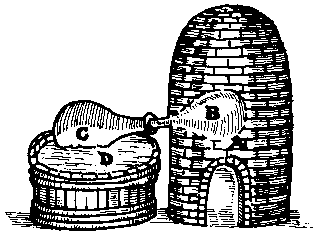Links to download Zoom Lecture Videos and PDF files
- Lecture Date: Monday, March 30, 2020
Lecture was primarily on determining the lowest energy conformation of six-member ring systems with multiple substituents. Covered working from 2D line drawings to Haworth projections to chair conformations and then analysis of 1,3-diaxial interactions and gouche interactions in Newman projections. Also covered A-values of different substituents and a quick overview of the nomenclature of bicyclic and spiro compounds.
- Lecture Date: Wednesday, April 1, 2020
Stereochemistry of alkenes (E vs Z) utilizing Cahn-Ingold-Prelog rules. Introduction to stereochemistry, stereogenic centers, enantiomers and rotation of plane polarized light.
- Lecture Date: Monday, April 6, 2020
Assignment of configuration (R vs. S) for stereogenic centers, review of Cahn-Ingold_Prelog rules, molecules with multiple stereogenic centers, introduction of diastereomers, and meso compounds.
- Lecture Date: Wednesday, April 8, 2020
Overview of Polarimetry, determination of specific rotation, absolute configuration, definition of terms racemic, non-racemic, racemate or racemic, determination of enatiomeric excess, and resolution through diastereomeric salt formation.
- Lecture Date: Monday, April 13, 2020
We finished up Chapter 5 with an overview of how to draw Fischer projections. Chapter 6 was started with a review of enthalpy, entropy, a derivation of Gibb's free energy, equilibrium, kinetics, and finally energy diagrams. An introduction to kinetic vs. Thermodynamic control was presented.
- Lecture Date: Wednesday, April 15, 2020
Lecture covered Chapter 6 introduction of transition states, Hammond Postulate, early and late transition states, nucleophiles, electrophiles, and arrow pushing of common mechanistic steps (nucleophilic attack, loss of leaving group, proton transfer, and structural rearrangements).
- Lecture Date: Monday, April 20, 2020
In this lecture we finished up Chapter 6 with a look at reversible and irreversible reaction steps. We started Chapter 7 with an overview of nomenclature of alcohols, characterizations of alcohols and alkyl halides, and started an overview of substitution reactions.
- Lecture Date: Wednesday, April 22, 2020
Lecture primarily covered the substitution nucleophilic second order SN2 reaction mechanism. The nature of the transition state was discussed in detail, as well as the need for a back side attack of the nucleophile on the substrate, and the effects of the substrate sterics on the activation energy Ea and reaction rates of the reaction. We looked at the stereochemistry of the reaction and inversion of configuration resulting. An introduction to substitution nucleophilic first order SN1 reaction was started.
- Lecture Date: Monday, April 27, 2020
We started with an introduction to SN1 reactions and an in depth look at carbocation stability. The rate of the SN1 reaction was linked to the stability of the developing carbocation through Hammond postulate. Examples were presented of SN1 reactions as competitions to see which reaction would proceed faster. We concluded with a look at carbocation rearrangements via both 1,2-hydride shifts and 1,2-alkyl shifts.
- Lecture Date: Wednesday, April 29, 2020
Today we finished up Chapter 7 with a look at kinetic vs. thermodynamic control for allylic carbocations in SN1 reactions. While I made a lengthy error in the middle of the lecture, the error was caught and corrected. The notes were likewise corrected. We concluded with a look at the stereochemistry of SN1 reactions leading to racemization of a stereocenter undergoing the SN1 reaction.
- Lecture Date: Monday, May 4, 2020
Having finished SN1 and SN2 reactions we turned our focus to Elimination first order (E1) and Elimination second order (E2) reactions. We looked at Zaitsev's rule and the origin of the regioselectivity it predicts for E1 reactions. We also looked at the E2 reaction and the requirement of anti coplanar relationship of the proton and leaving group for the E2 to proceed. We ended the lecture with an overview the four reaction energy diagrams and a couple of E2 examples on cyclohexane ring systems.
- Lecture Date: Wednesday, May 6, 2020
We bring it all together today by looking at SN1, SN2, E1, and E2 all together in context. It's also big data day where we look at relative rates for each of the four reactions to see how sterics and electronics influence each of the reactions.
- Lecture Date: Monday, May 11, 2020
Here we start our first foray into determining the major reaction pathway either SN1, SN2, E1, or E2 by considering substrate, leaving group, nucleophile or base, solvent and temperature. Two examples were looked at in detail.
- Lecture Date: Wednesday, May 13, 2020
This is the second lecture working on determining the major reaction pathway either SN1, SN2, E1, or E2 by considering substrate, leaving group, nucleophile or base, solvent and temperature. Many more examples were looked at in detail, including a look at epoxide substrates and relative rates of reaction.
